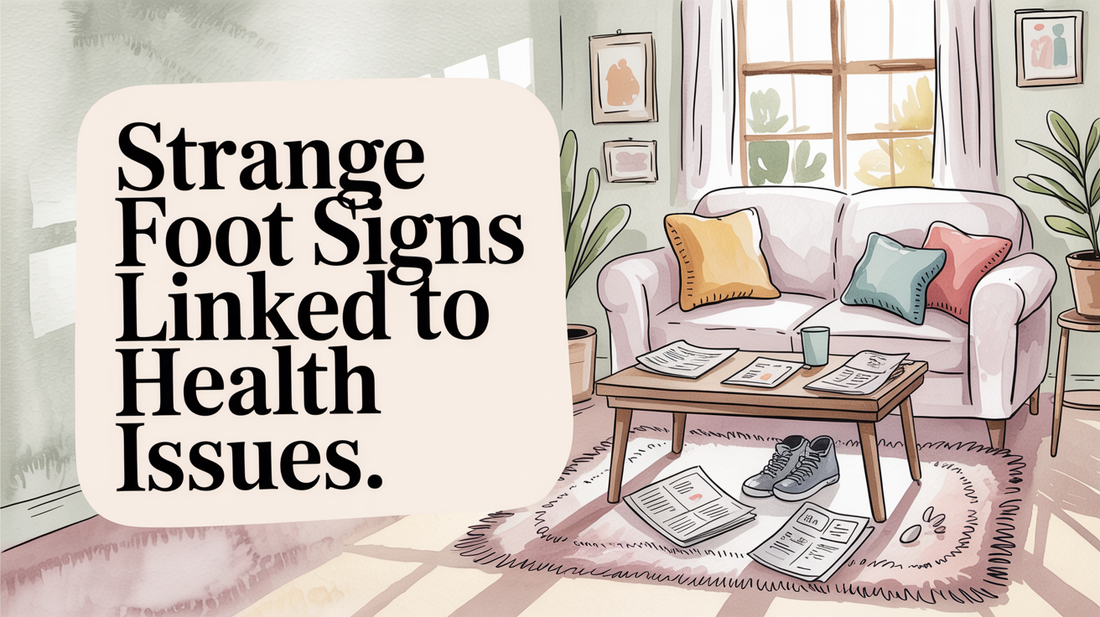How can your feet warn you about health issues?
foot warning signs, edema ankles, neuropathy symptoms — Our feet can reveal essential information about our health. Common signs like color changes or swelling in the feet can be indicators of underlying health issues that deserve attention. In this blog, we will explore three key areas: color and swelling changes, sensation shifts, and the importance of addressing non-healing sores. By understanding these foot warning signs, you can take proactive steps toward your health today.
Color & swelling changes 🧭
Changes in the color and swelling of your feet can serve as early warning signs of potential health concerns. For instance, blue or purple hues may indicate circulation issues, while red, swollen areas could signal infections or inflammatory conditions. Keeping an eye on these changes is crucial, as they often require further investigation.
Moreover, if you notice persistent swelling in your ankles and feet (edema), it might relate to health conditions such as heart failure or kidney disease. Sudden swelling on one side could also necessitate immediate medical attention, as it may indicate a blood clot.
- Blue or purple discoloration may relate to circulation problems.
- Red, warm areas could indicate infection or gout.
- Pale feet might suggest anemia or poor circulation.
- Yellowing could be linked to liver issues or diabetes.
- Persistent swelling (edema) in ankles may indicate serious conditions.
Try It Tonight: Calm, Fresh Feet ✨
- Wash feet with warm water and mild cleanser; dry thoroughly between toes.
- Apply a small amount of Kissable Feet where needed; massage until absorbed.
- Let skin breathe; slip on breathable socks if desired. Patch-test first if you’re new to this foot cream.
Sensation shifts ✨
Changes in foot sensation can be early signs of neurological conditions, particularly diabetic neuropathy. Symptoms such as numbness or tingling, especially starting in the toes, may indicate nerve issues. Recognizing these sensations early can help manage symptoms and improve your quality of life.
For instance, burning pain in the feet, particularly at night, is often associated with peripheral neuropathy. Additionally, losing the ability to feel temperature can increase the risk of injuries, making awareness of these sensations vital.
- Numbness and tingling starting in toes may indicate diabetic neuropathy.
- Burning pain, especially at night, often relates to nerve issues.
- Loss of temperature sensation increases injury risk.
- Balance problems may arise from reduced position awareness.
- Sharp, stabbing pains can signal nerve compression.
Why We Recommend a Gentle Helper 🌿
Kissable Feet is crafted for quick absorption and a soothing, non-sting feel. The nurse-crafted blend with tea tree, coconut, and calendula is designed for comfort and a clean finish—easy to add to a nightly routine.
- Fast-absorbing comfort—non-greasy finish.
- Gentle sensation suited for sensitive, overworked feet.
- Clean-leaning, bedtime-friendly scent.
Sores that won’t heal 🔍
Non-healing sores on the feet are serious warning signs that require attention. These types of wounds can be linked to poor circulation, often seen in conditions like diabetes. If you notice sores that do not heal within a few days, it’s essential to consult a healthcare provider.
Diabetic ulcers, for instance, can develop at pressure points and may heal slowly. Other types of ulcers, such as venous ulcers, often appear near the ankles and can be accompanied by swelling. If a wound shows signs of infection, such as redness or pus, it requires immediate treatment.
- Diabetic ulcers typically occur on pressure points and heal poorly.
- Arterial ulcers may appear pale and heal slowly.
- Venous ulcers often develop around the ankles with swelling.
- Infected wounds may present with redness, warmth, or odor.
- Any wound that worsens or does not improve in 2-3 days should be evaluated.

